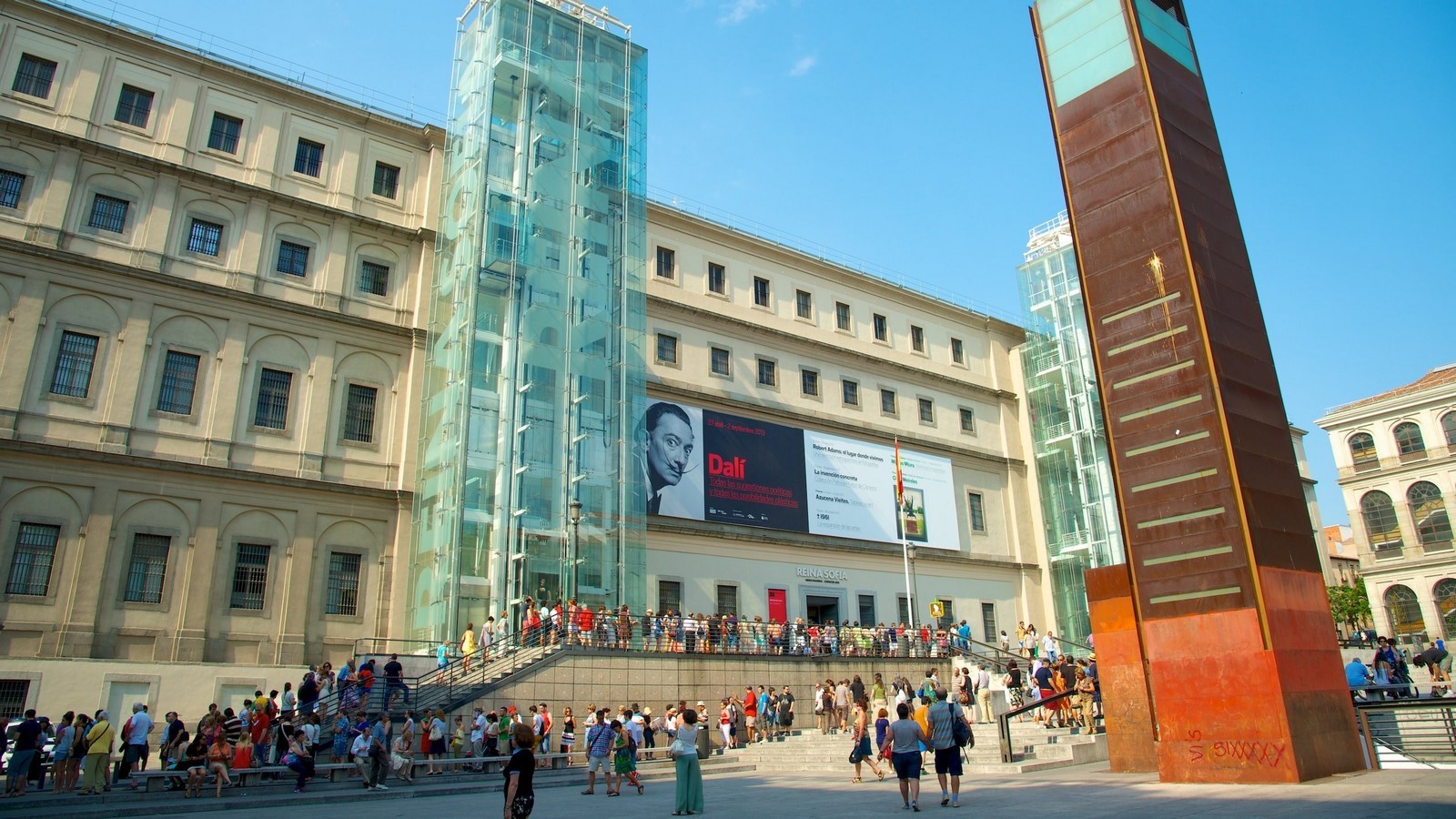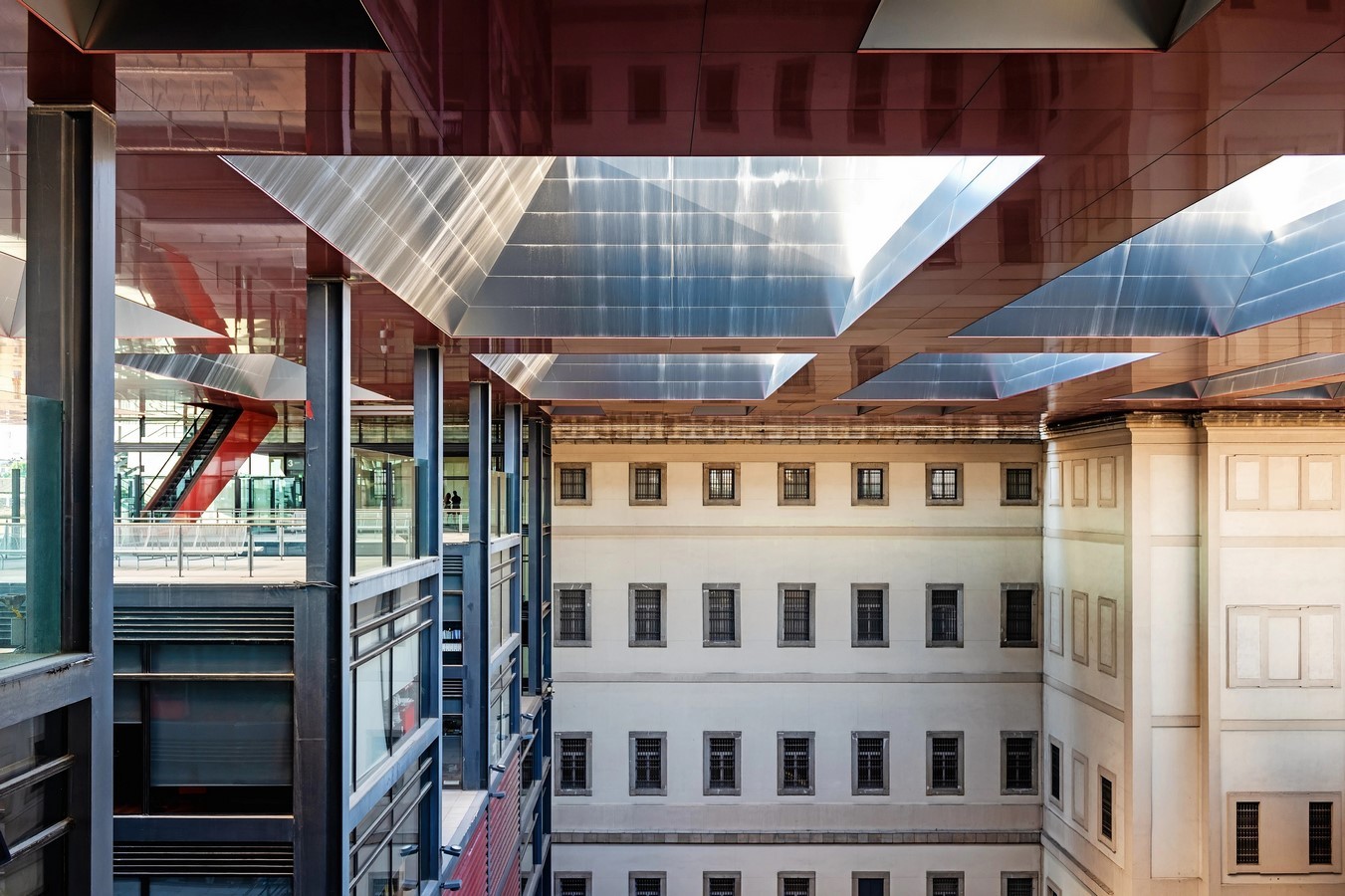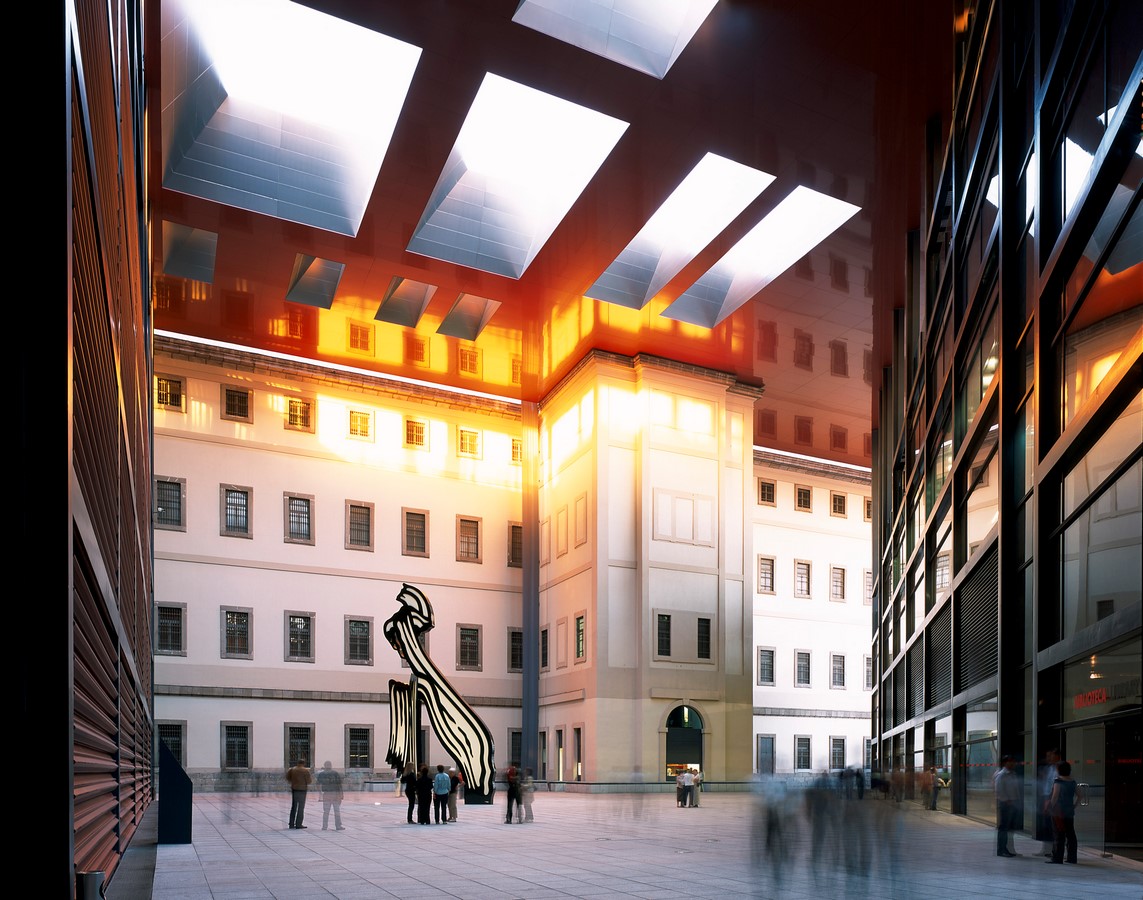Introduction
The Museo Reina Sofia is a museum for outstanding national and international representation of avant-gardes and neo-avant-gardes and is a depiction of Spain‘s democratic transition. The physical design of the museum is an artistic work that Spain may employ to break up the routine of conventional mainstream museums and produce new current narratives that are absent in the Spanish setting.

The Museo Reina Sofia goes above and beyond what is often expected of an art gallery by working with a wide range of organisations and institutions and acting as a hub for cultural exchange. It moves into a setting where the general populace can be reinforced and where individuals from various backgrounds and points of view can participate, challenge, produce, and reject, resulting in a uniquely personal and collective artistic experience. The museum acknowledges the diversity of its visitors and starts by addressing the need for creativity among these various groups of people.

Architecture
To accomplish the objectives outlined in the design concept, the new extension skilfully uses and manipulates the most recent techniques and materials. The museum combines historical and modern architecture. Architect Jean Nouvel’s design for the expansion integrates the existing Sabatini Building with contemporary structures. This juxtaposition of old and new architecture enhances the visitor’s experience by offering a sense of continuity and change in the art world.
The auditorium building’s exterior and interior coatings of fibreglass and polyester give it a distinctive reddish hue, while the remainder of the buildings’ facades are made of extruded aluminium protective sheets. The library and temporary display building are constructed from rolled steel sections, and the beams and columns are created from 5 cm thick sheets that were laser-cut and then welded in the workshop. Two symmetrically positioned ribs that support the loads of the auditoriums, and the procedure are part of the post-tensioned concrete system used to build the auditorium.
The new 8600 sq. ft. addition, which represents an increase in area of more than 60% of the surface of the existing structure, blends in with an ancient wing converted from a hospital to accommodate the operations of an art centre. The environment becomes tangible and then immaterial through a byplay of surprises using a strategy of differentiating services and spaces arranged in buildings surrounding a public plaza that are perceptibly unified beneath a roof. Space has been set aside for temporary exhibitions, an auditorium with a seating capacity of 500, a 200-seat auditorium, a bookshop, eateries, and administrative offices. A Jatoba wood library with 100 reading stations and 250,000 bookshelves adds to the comprehensiveness of the centre.

The central atrium, named the “Patio de los Reyes,” is a striking architectural feature. It serves as a gathering space and provides a dramatic visual experience. Courtyards are used as exhibition spaces, offering outdoor access and breaks, adding variety to the visitor’s journey.
The Sabatini building is connected to the extension in the form of three buildings that surround a public plaza in a physically coherent style, with access inside the complex dependent on their function and the user. Contrasts like the huge and opaque show a conversation between the two wings. By manipulating glass, the new block creates levity, transparency, and dematerialization that balance out the Sabatini structure.
Overall, Museo Reina Sofia’s architectural innovations contribute to the visitor’s experience by creating an environment that is conducive to art appreciation and offers a harmonious blend of historical and contemporary elements, making the museum a cultural and architectural landmark in Madrid.
Art
Dedicated to modern Spanish art, it proudly exhibits a collection of works made by world-famous Spanish painters including Pablo Picasso, Salvador Dali, Joan Miró, Eduardo Chillida, Pablo Gargallo, Julio González, and Juan Gris in addition to globally acclaimed artists.
Museo Reina Sofia’s collection features numerous iconic pieces that contribute to the narrative of modern Spanish art. Some of the notable artworks include:
-Pablo Picasso’s “Guernica” is one of the most well-known anti-war pieces of art ever created, depicting the atrocities of the Spanish Civil War. It is a potent representation of how political and social themes are being addressed in modern Spanish art.
-Works by Salvador Dal: The museum is home to a number of works by the renowned Surrealist artist, including “The Enigma of William Tell” and “The Dream.” Spanish modernist art of the 20th century is typified by Dal’s unique and inventive aesthetic.
– Joan Miró’s “Woman in Blue” is an example of his abstract and whimsical style and reflects his contribution to the growth of abstract art in Spain.
-“The Poet” by Joan Brossa: This piece by the Catalan artist is an example of the relationship between art and poetry, highlighting the interdisciplinary nature of modern Spanish art.
-Josef Albers’ “Homage to the Square” This piece demonstrates the 20th-century art movements in Spain that had an impact on abstract and geometric design.
These iconic pieces collectively illustrate the diverse styles, themes, and movements that have shaped modern Spanish art. They reflect the artists’ responses to political, social, and cultural changes during this period, making Museo Reina Sofia a significant institution in the narrative of Spanish art history.
Reference Links:
1.Belmont.S. In reshuffling Its Permanent Collection Displays, Madrid’s Reina Sofía Connects Disparate Art Histories Across Time and Space. Available at:
www.artnews.com
[Accessed 20 October 2023]
- Zelazko.A. Guernica, work by Pablo Picasso. Available at:
https://www.britannica.com/topic/Guernica-by-Picasso
[Accessed 20 October 2023]
3.Simon.C. Museums of the World: Museo Reina Sofía. Available at:
https://www.re-thinkingthefuture.com/travel-and-architecture/a8844-museums-of-the-world-museo-reina-sofia/ [Accessed 20 October 2023]
4.Perrault Architecture (2023). Reina Sofia Museum Available at: https://www.perraultarchitecture.com/en/projects/2494-reina_sofia_museum.html
[Accessed 20 October 2023]
5.Wikipedia (2023). Museo Nacional Centro de Arte Reina Sofia [Online] Available at: https://en.wikipedia.org/wiki/Museo_Nacional_Centro_de_Arte_Reina_Sof%C3%ADa
[Accessed 21 October 2023]
6.Gautam.R. Museums of the World: Museo Nacional Centro de Arte Reina Sofía. Available at:
https://www.re-thinkingthefuture.com/architectural-styles/a9453-museums-of-the-world-museo-nacional-centro-de-arte-reina-sofia/#google_vignette
[Accessed 21 october 2023]














